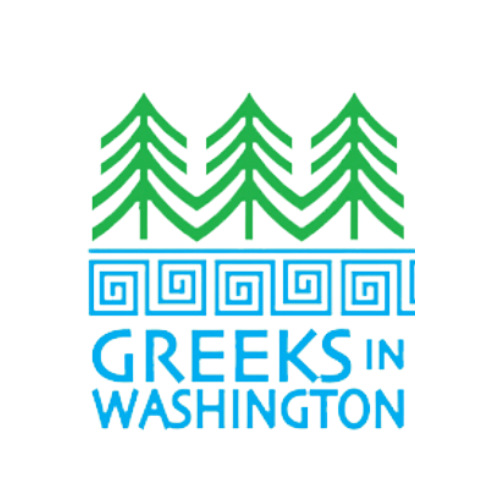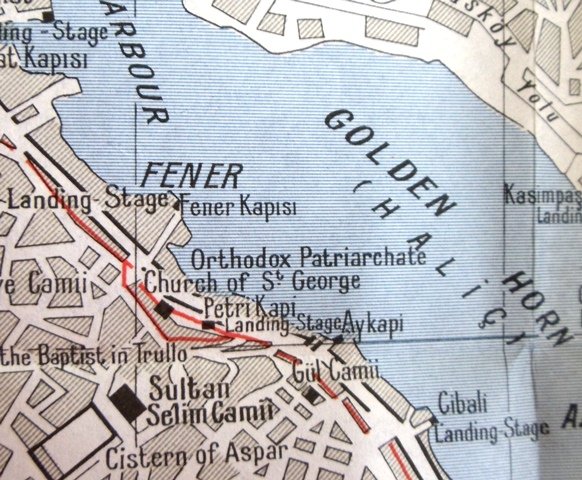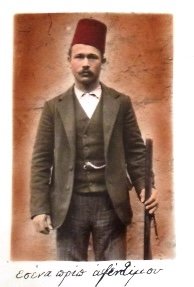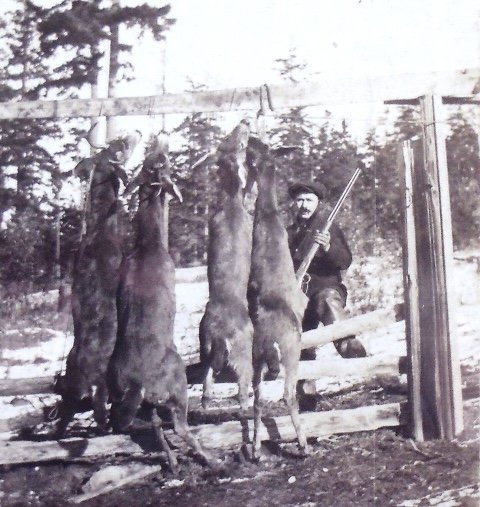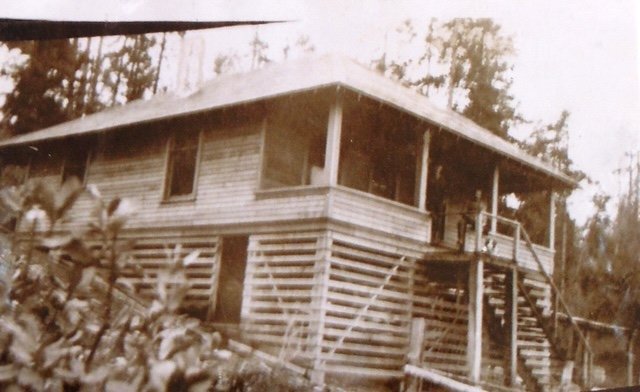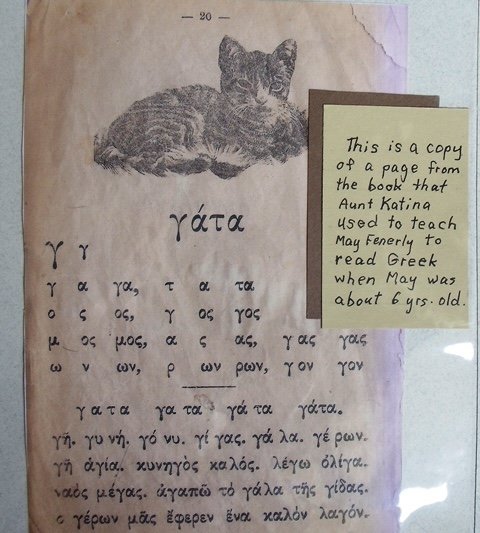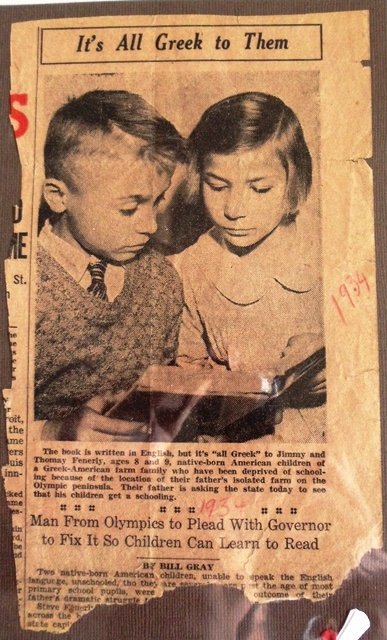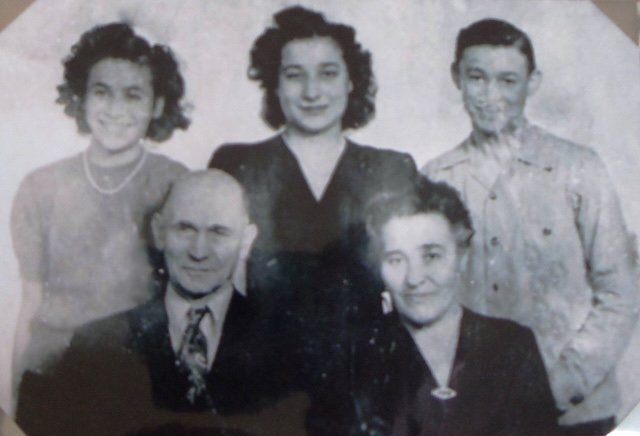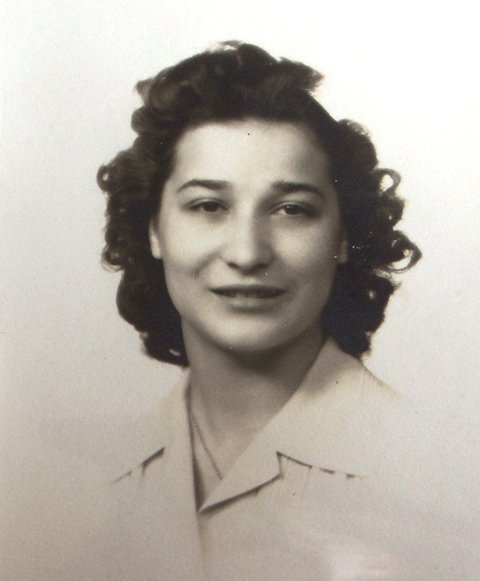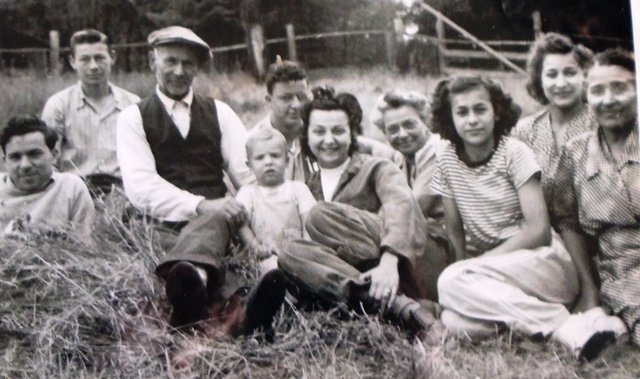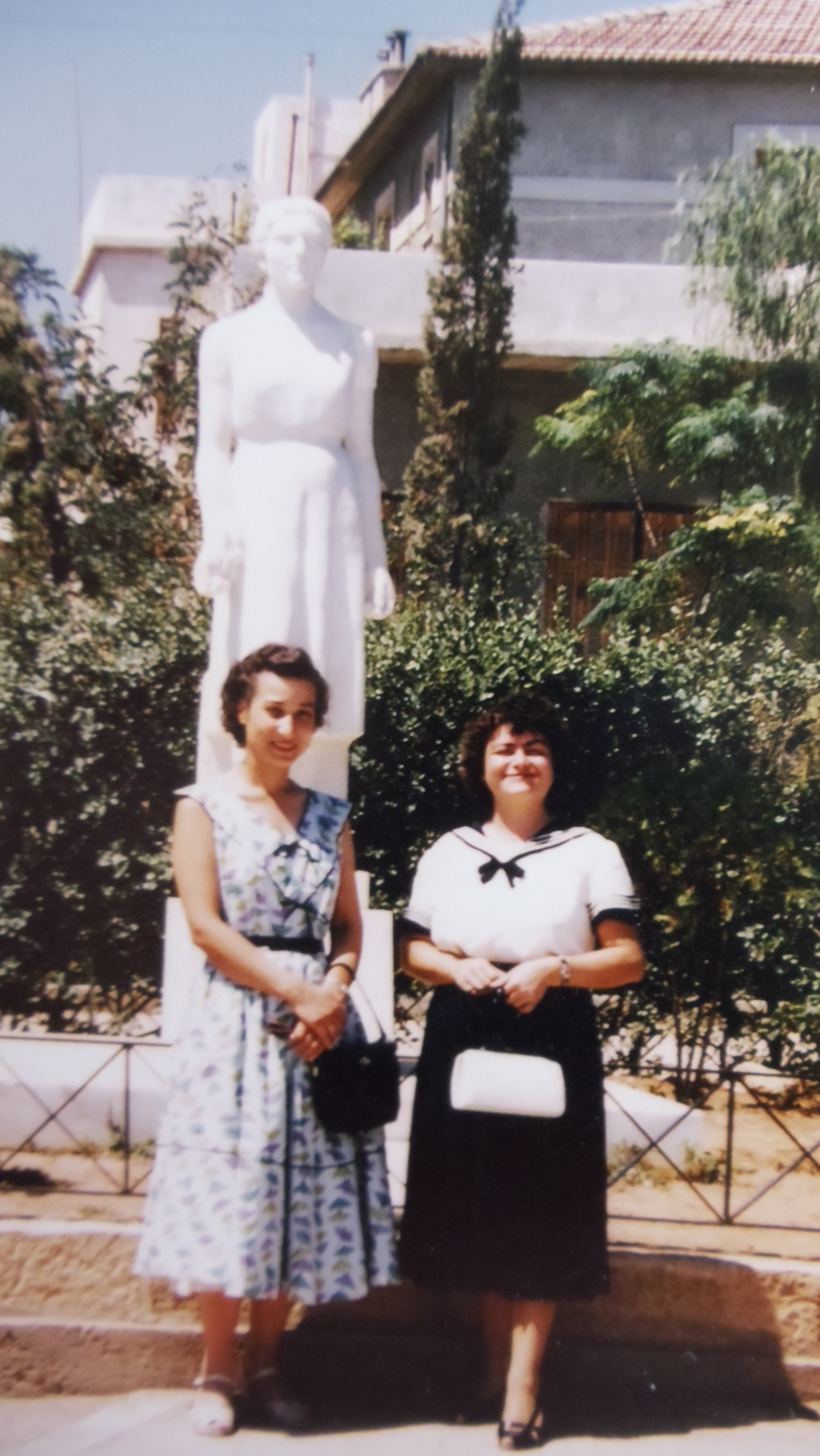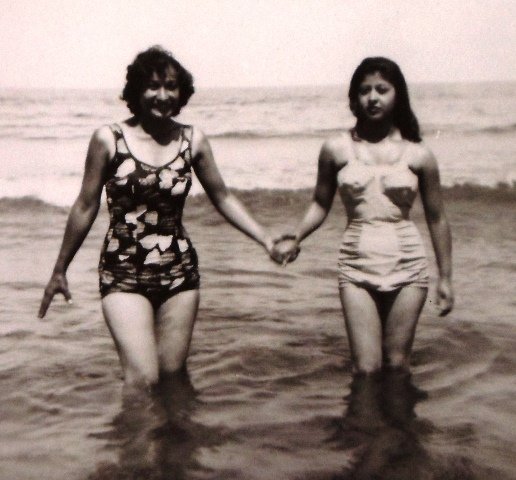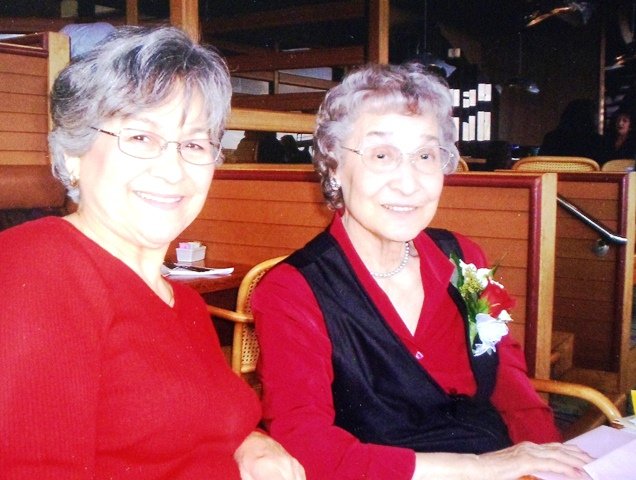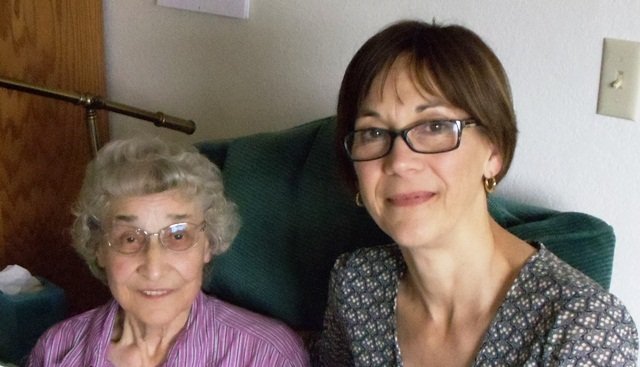Learning the Hard Way
Thomay (from Thomas) “May” Fenerly grew up in a small cottage on Sequim Bay on Washington’s Olympic Peninsula without a road until 1937 and without electricity until 1955. Despite the challenges of living and learning in a remote location, May successfully pursued and developed a career in education. She has also meticulously documented the family history in words and photos.
May’s father’s family came from the Fener (Phanar) district of Istanbul (then Constantinople) in Turkey. The family had lived in this area since the days of the Byzantine Empire. The oldest son John (May’s uncle) had been sent by his mother to live with an uncle in Slivry, west of Istanbul at age 12. John later traveled to Rumania, Greece, Egypt, Italy and France. He learned the language of each country as he travelled and got a job shoveling coal on a boat to New York. On his first two trips to America he was not allowed onshore. On his third trip he jumped ship and lived with an Italian family. He learned that a copper mining company needed an Italian interpreter and traveled with Italian workers on a train to Montana. The weather was cold and the copper dust poisonous but the boss wouldn’t let his workers inside to get warm. This made John angry, so he packed up, set the bunk house on fire and fled on horseback while avoiding gunshots. Somehow he got to Washington State before 1910 and eventually moved to Mexico in 1918 where he married, established a photography studio, raised a family and retired. His story is contained in a Spanish language autobiography which May has been translating.
May’s father Steve (Stavros) Fenerly joined John in Port Orchard, Washington. Steve left Turkey in 1910 to avoid the Turkish draft. By then it was clear that war was imminent between Greece and Turkey. When May’s father, Stavros (Steve) Fenerly received his draft notice, his mother told him to go to America to be with his brother John and return after the war. In 1914, two of their sisters, Artemisia and Eleni came directly from Turkey to join them. Artemisia eventually married William Victor and settled in Tacoma while Eleni married Mike Demopoulos from Anacortes, Washington. (see FROM RAGS TO RICHES under Making a Living) The brothers found property at Sequim Bay on Washington’s Olympic Peninsula, and when John left for Mexico, Steve remained in Sequim.
Anastasia Pantakis also lived in Istanbul. Her family was caught in a population exchange between Greek and Turkish citizens in 1923 and at the age of 22 Anastasia landed in a refugee camp in Thessaloniki, Greece, with her mother, her sister, brother-in-law and their three children. There they met Steve’s sister, Katina, her husband and their teenage children. Katina’s husband, as well as Anastasia’s sister and two of her sister’s children died there. In 1924 Katina and her children went to Mexico where uncle John Fenerly was established, and Katina was told to bring Anastasia as a bride, for Steve. At the same time, Steve traveled from Sequim to Mexico to meet the family and claim his bride. The couple returned to Sequim through El Paso, Texas.
May (Thomay or Thomai), the first Fenerly child and the only one delivered in a hospital, was born in Sequim on January 15, 1926. She was named after her maternal grandmother who been named for her grandfather Thomas. The second child, Demetri (Jim) was born in 1927, followed by Nicholas in 1930 and Margarita in 1932. Demetri died in 1941 (killed by a drunk driver). Nicholas died in 2002 and Margarita in 2010.
There were no roads to the house on Sequim Bay; transportation was by a few small boats and a motor launch. Steve would boat across the bay to Washington Harbor and walk the two or three miles to and from Sequim for groceries and supplies. Anastasia was not the outdoor type and did not like living there. With no electricity serving the home, water was pumped from a well and a wood-burning stove was used to heat the water and prepare food. Steve was a farmer. He first tried unsuccessfully to raise turkeys. He then bought dairy cows and began separating the cream for sale to a creamery. His successful endeavor was the production of feta cheese which he sold mostly by word of mouth to stores and Greek restaurants in Port Angeles, Seattle, Tacoma and even in Montana. The family had plenty of milk, butter, cream and cheese along with poultry from the farm and fish from Sequim bay. However, with no electricity and no road, access was severely limited. When a logging company used part of the Fenerly property for housing, a road was finally cut in 1937 with the permission of adjoining property owners. But it was not until 1955 after brother Nicholas became an electrician that electricity was brought to the home.
May and her brother Jim were taught to read and write in Greek by their parents. When the law requiring public education was passed, the children were without access to schooling. In 1934 Steve took his children to Olympia to meet with Governor Clarence Martin to ask for help getting his children to school. They traveled by bus through Seattle where a barber friend arranged an interview with a newspaper reporter, then to Tacoma to stay with aunt Artemisia and on to Olympia. Arrangements were made for the children to be picked up across the bay at Washington Harbor to stay with a family during the week and take the bus to school. Steve would pick them up on the weekend for a home visit, a bath and clean clothes. Having learned to read and write Greek and having learned multiplication tables from her father, May caught on quickly and skipped the second grade. For a short time the children were ferried across the bay by a fisherman with a wooden leg, who was paid for this service by the state. For the fourth and fifth grades May remembers traveling several miles through forest land and neighbors’ property to attend the one-room Little Michigan School near Blyn. Finally, when the logging company built a dock on the beach in front of the Fenerly place, and cut a road for their logging trucks through the adjoining properties, the children had better access though they still had to open and shut gates to keep livestock from roaming.
In 1945 May graduated from high school and passed the state merit system examination, which qualified her for state civil service and a subscription to state job openings. Her first opportunity was in Seattle, but with no place to live, she eventually secured employment with the Pierce County Welfare Department and lived with her aunt Artemesia Victor in Tacoma. May’s father died in April of 1948 and she returned to the Sequim farm to milk the cows and help her mother with other farm chores. Her younger siblings had been staying with other relatives to attend school since the bus did not yet stop near their property. In 1948 this was rectified and once they returned home, May used her savings to attend Western Washington College of Education (now Western Washington University) in Bellingham to study for a teaching career. She was granted a certificate after only three years as the demand for teachers was very high and obtained a position in the Edmonds School District teaching second grade.
Now that May could support their mother, her brother Nicholas’ military deferral status ended and he was drafted into the U. S. Army. May taught for the next four years in Edmonds, Washington, and returned to teach in Sequim in 1955 for four more years. The year 1955 was a significant one for the family: Nicholas came home from the army and wired the house for electricity, Margarita got married and May traveled to Greece with her mother and brother Nick.
May tried unsuccessfully to teach in California but, after a complex application process, remained in Washington and taught in Seattle for two years. When her mother became ill, May quit teaching and cared for her until Anastasia passed away in 1967. May then lived in Everett for a while, working in the Snohomish County Family Court, after which she secured a position as a clerk with the Mukilteo School District where she remained for 19 years. Altogether May accumulated 32 years of work in the state public school system and enjoys a comfortable retirement.
Although the Fenerly family was isolated, there were a few other Greek families in the surrounding area. May often baby sat for the Kravas family’s three sons, Bill, Harry and Gus. Anastasia and Mrs. Kravas attended classes together in preparation for their U. S. citizenship. The Capos family had a restaurant in Port Angeles and there were two Sandas families, one of which owned a bakery. The Caris family also lived in Port Angeles and Mr. Johns worked at the paper mill.
Before May’s sister Margarita died in 2010, the two sisters spent considerable time completing a family history book. It contains photos and narrative going back to their grandparents’ days in Istanbul. She proudly shares the photos and stories.
May is glad she learned to read and write Greek at an early age. The isolated existence they had and the struggle to overcome that limitation are most memorable for her. She says, “Get as much education as you can. It is good for you and good for the world.”
By John and Joann Nicon, June 2012
PHOTOS
May Fenerly with family history book
Stavros Fenerly, circa 1902
Map of Fener (Phanar) Istanbul
Stavro’s passport, 1910
Stavros (Steve) with four deer, circa 1920
Steve and Anastasia wedding party (l-r) Front: Anastasia, Katina Andrade, Magdalena Baradas Fenerly; Back: Steve, Margarita Andrade, John Fenerly, Dimitri Andrade, 1925
Sequim home under construction, 1924
May at 11 months old, 1926
Page from May’s Greeks school book
Demitri (Jimmy) and May, Seattle Star article, 1934
Steve Fenerly family (l-r) May, Steve, Margarita, Anastasia and Nicholas, circa 1940
May at high school graduation, 1945
May at Pierce County Welfare Department, circa 1946
On Fenerly Farm,(l-r) Front: Chris Demopoulos, Steve Fenerly, Tom McKee, Billie McKee, Rita Fenerly, Anastasia Fenerly, Back: Nick Fenerly, Themo Demopoulos, Eleni Demopoulos, May, circa 1946
May and cousin Eftihia Makridou in Greece, 1955
May and cousin-by-marriage (Uncle John’s daughter-in-law) Clara Nunez in Gulf of Mexico near Veracruz, 1957
May and sister Margarita, circa 2000
May and niece Anne Amar, 2012
Photos 1 and 18 by John Nicon; all others from Fenerly family collection
SOURCES
Video interview by John and Joann Nicon, May 2012; SEQUIM Pioneer Family Histories From 1850 W.W.II. Museum and Arts Center. Sequim, Washington. 2000
VIDEO SEGMENTS
